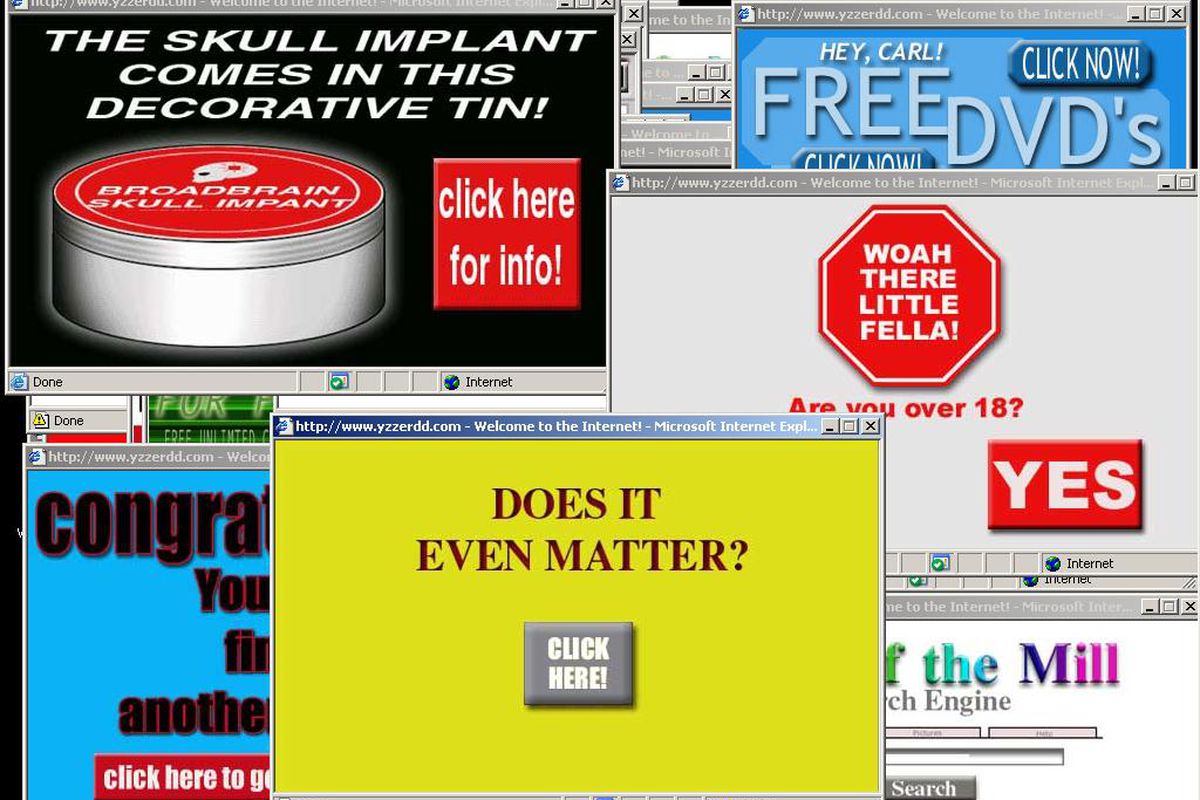2000s Called and Want Their Ad Farms Back
According to a recent programmatic advertising transparency study by the ANA nearly a quarter of all ad views are from websites made solely to sell ads. This is problematic for industry and users.

Junk. ‘Invalid Traffic’. Ad farm. The site that publishes anything and everything in the world… The Made-for-Advertising (MFA) publisher, Gold Banner… The great business model he left behind, One Site, raised the curtain on a grand race to the bottom of the market.
“You want my KPIs? You can have them! I left all the tricks I gathered together with one SSP. Now you just have to find it.”
These words lured many publishers and adtech to the Gravy Line in pursuit of performance metrics greater than they’ve ever dared to show advertisers! This is the age known as the ‘Great Clickbait Era’.
What’s all the fuss?
According to a recent programmatic advertising transparency study by Jounce Media and the ANA, "15% of programmatic ad spend" and "a 'startling' 21% of impressions" were attributed to websites made solely to sell ads.
These so-called Made for Advertising (MFA) sites are controversial in the media space not only because they divert advertising dollars away from higher quality (and pricier) publishers, but because they’ve become part of a metrics-or-bust paradigm that can incentivize foul play. At a time of mounting regulatory pressure and when 73% of U.S. consumers say they have “little to no control over what companies do with their data”, MFA sites are seen as exacerbating mistrust.
But what exactly is an MFA site? Is it a generic blog written by AI? A banner-heavy review site that could be from the mid-2000’s? A news syndication site with slide shows and headlines like “Don’t Eat These Foods!”?
Common characteristics
To educate advertisers about MFA and help them make informed media buying decisions, a consortium of influential trade groups came together to clearly define this content.
According to updated guidance the MFA tree bears five kinds of problem fruit:
- High ad-to-content ratio: banners, hover-over text ads, autoplaying video ads and other pop-ups, and 'sponsored' content taking up 30% or more of visible space.
- Rapidly auto-refreshing ad placements: rotating ad content, slide shows and 'stacked marketing' flows maximizing ad inventory.
- Low ratio of organic visits: sites highly dependent on paid traffic sources like search and social ads, content recommendation platforms and 'sponsored' content on popular websites.
- Generic or low quality content: clickbait links cookie-cutter articles (increasingly written by AI), generic reviews and syndicated quotes/lyrics/recipes, syndicated news stories and other kinds of regurgitated content.
- Generic or templated designs: cookie-cutter sites designed to maximize ad inventory and expedite syndication.
MFA x privacy
Although the problem with MFA sites is generally about ad spend siphoning, personal data nonetheless plays a role in the nexus of concerns being raised.
Spammy tactics included, spawning and optimizing sites for ad revenue means a few cascading things:
- Data harvesting: Personalization to the point where one visitor's experience can be made completely different from the another's is not data-cheap. With the increasing use of AI-powered content tailoring.
- Network effect: Many MFA properties operate as coordinated networks so as to avoid detection and blacklisting. The scale of data collection across such networks can be staggering. Which brings us to...
- Programmatic saturation: Garnering 21% of all ad impressions is no small feat. This requires many, rapid-fire bid requests, and in turn more data passed to sell-side and then buy-side platforms. Are the requests secure? Is appropriate consent obtained before trackers load? Are opt-out choices honored? How would one check?
Zooming out
MFA sites perpetuate a system of warped incentives antithetical to consumer transparency and advertiser trust. The industry is responding, however. For example, Integral Ad Science has rolled out AI-powered MFA detection capabilities, and in September Google started enforcing updated content standards that penalize ‘low quality’ MFA.
Neither advertisers nor users want a return of the adware riddled, popup drenched web of past days. And users are more than willing to deploy increasingly sophisticated ad and script blockers as a means of protest and self-defense.
PS: I hope you enjoyed the "One Piece" parody in the intro.
